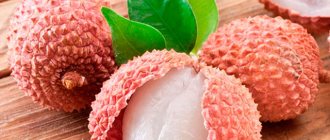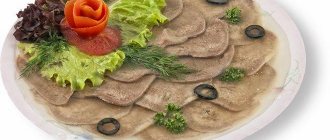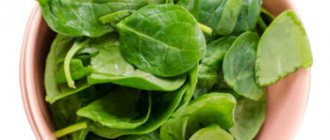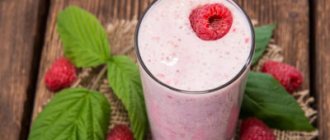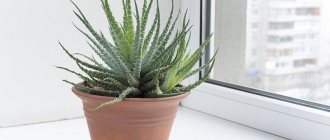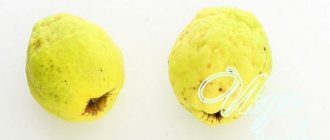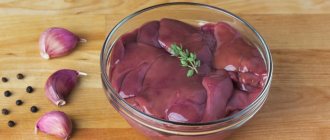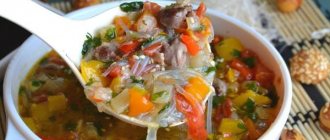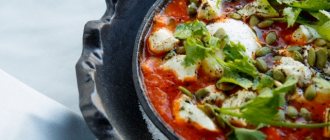Quince belongs to the Rosaceae family, which gives it the right to be considered a close relative of the pear.
Pear - 12 beneficial properties and contraindications for the body Five beneficial properties of the pear fruit for humans. What are the benefits of pears for women and men? Its composition is vitamins and nutrients in pears. The health benefits and harms of pears. and apple
Apples - 20 beneficial properties for health and contraindications The article shows the 20 most beneficial properties of apples for human health, as well as their contraindications and harm. For what diseases is it recommended to consume these fruits? The benefits of apples for weight loss. . Quince belongs to a monotypic genus and is therefore represented by one species - common quince.
Quince fruits also have other names, such as “kvite” - German, “dyula” - Bulgarian, “heyva” - Azerbaijani, “pigva” - Polish. The name quince, which is familiar to us, has Turkish roots.
Quince and its beneficial properties have been known to mankind for more than 4 thousand years. The North Caucasus is considered the homeland of this amazing plant ; it was from there, researchers believe, that this culture came to Asia, Ancient Greece and Rome. The benefits and harms of quince for the body were studied by the ancient Greeks, who loved this fruit for its juicy and bright taste and gave it the name golden apple. In general, in mythology, quince fruits symbolize love and fertility, so they were often used in various rituals associated with marriage.
Quince is the earliest known fruit. Research notes that it was the quince, and not the apple, that became the forbidden fruit that Eve sipped in the Garden of Eden. And the dispute known to all historians, because of which the Trojan War began, arose, according to the same historians, because of the aromatic quince. It was her who the god of love Paris gave to the beautiful Helen.
Nowadays, quince grows naturally in the Caucasus, Central Asia and southern Europe, and is grown artificially almost all over the world, even in northern countries such as Norway. The quince plant is a shrub about 5 m high. Quince fruits are shaped like an apple or pear, lemon or dark yellow in color with a tart and astringent, but sweet taste. Quince fruits ripen in July-August. It is worth saying that this fruit is quite unusual - you should not eat it raw. Unprocessed quince fruits are hard and sour. And when cooked they become sweet and tender in taste.
The benefits of this mysterious fruit are praised in many legends and ancient tales. Indeed, this fact of the uniqueness of quince has been proven and cannot be doubted.
Beneficial properties of quince for the body of men and women
The nutrients in quince provide the body with a number of benefits:
- Vitamin C increases the body’s susceptibility to viruses and infections, improves immunity;
- iron reduces the risk of anemia;
- a high concentration of antioxidants neutralizes the effects of free radicals, which often lead to the development of cancer and premature aging;
- pectins help cleanse the intestinal walls, and the binding properties of tannins help in the treatment of diarrhea.
Regular consumption of quince relieves symptoms of insomnia and chronic fatigue
Chronic fatigue syndrome: causes, risks, diagnosis, treatment The main causes of chronic fatigue syndrome, its symptoms and methods of diagnosis. What are the available ways to treat and overcome this syndrome. , improves mental state. The beneficial properties of the fruit are used in the prevention and treatment of heart and vascular diseases. Rutin
Rutin - what foods it contains and how it is useful for the body Rutin (vitamin P, rutoside) is a flavonoid found in plants, fruits, and vegetables. From the article you will learn about the benefits of this vitamin, contraindications, content in products and compatibility with drugs. , contained in fresh fruits, prevents the development of hypertension and reduces the risk of atherosclerotic plaques. The diuretic effect of quince juice improves the functioning of the genitourinary system, helps fight edema and cystitis.
The fruits and leaves of the tree shrub are widely used in folk medicine. They serve as raw materials for preparing infusions used in the treatment of bronchitis, diabetes, and asthma. Quince seeds are often used as a base for decoctions that improve the body's condition for pain in the stomach and intestines . Fruit juice helps fight anal fissures , hemorrhoids and rectal prolapse .
Benefits of quince for men
Including fresh fruits in the diet helps strengthen the heart and blood vessels, reducing the risk of heart attack and stroke. Substances in the fruit improve the functioning of the genitourinary system and protect the prostate gland from the formation of low-quality tumors.
Benefits for women during menopause
Fresh fruits, along with juice, decoction or infusion from the seeds or leaves of the plant, alleviate the symptoms of menopause. Vitamins and minerals in their composition:
- prevent heavy bleeding;
- reduce the risk of developing iron deficiency anemia;
- improve blood circulation;
- strengthen the walls of blood vessels.
During pregnancy and breastfeeding
Substances in the fruit help pregnant women relieve symptoms of toxicosis and eliminate attacks of nausea. In the absence of allergies
Allergies: 8 Effective Folk Remedies To relieve allergy symptoms, you don’t have to immediately turn to Benadryl, Claritin or other medications. You can alleviate the symptoms of the disease naturally at home. Fresh fruits are recommended to be included in the diet of lactating women. Through mother's milk, the baby receives the iron and potassium necessary for its full development.
Potassium: benefits and harm to the body, deficiency, sources, dosage All about the benefits and harms of potassium for human health. 14 beneficial properties of the mineral for the body, side effects and contraindications, deficiency and sources of potassium replenishment. and calcium
Calcium benefits and harms: 10 beneficial properties for the body Useful and healing properties of calcium for our body. Features of the effect of calcium on our health and which foods contain the most of it. .
Despite its benefits, quince should not be abused. The recommended rate of fruits is 3 pieces per week.
For children
The introduction of quince, like any other product, into a child’s diet requires prior consultation with a pediatrician. Villi on the peel of the fruit are a common cause of a “red” throat and cough. They irritate the larynx of children, causing a number of inconveniences. In the absence of contraindications and allergic reactions, baked or boiled fruits are allowed to be given to babies from 10-11 months.
Benefits for diabetics
The number of people with diabetes is growing from year to year. The main reason for its appearance is associated with a violation of the conversion of glucose into glycogen in the body. A decoction of quince leaves helps prevent sudden changes in the substance. Its action normalizes blood sugar levels. To prepare a drink, just pour 300 ml into a handful of plant materials. boiled water and leave for a couple of hours. It is recommended to take 60 ml of the prepared decoction. 3 times a day.
For the elderly
Including the fruits of a tree plant in the diet helps older people reduce the risk of developing heart and vascular diseases. A large amount of vitamins and minerals in their composition not only improves the functioning of many body systems, but also improves immunity and helps fight viruses and infections.
Quince in weight loss diets
The fruits of the woody plant contain small amounts of fat and cholesterol. For this reason, nutritionists recommend them to those who are on a weight loss diet. Substances in quince improve digestion, suppress hunger, and help fight excess weight. Tea based on parts of the bush has a fat-burning effect. Its action stimulates metabolism in the body. To prepare the drink, you need to mix 15 grams. chopped quince pulp and 10 gr. cornflower flowers. The resulting mixture is poured into 0.5 liters. boiling water, wrap and leave for 15 minutes. After time, the composition should be filtered and consumed throughout the day in small portions.
How is quince beneficial for the human body?
The fruits of the plant have a variety of positive effects on the body:
- extinguish inflammation;
- strengthen the immune system;
- reduce the manifestation of allergies;
- improve metabolism and functioning of the digestive system;
- treat peptic ulcers (quince juice contains phenolic compounds that heal ulcers);
- help cope with hemorrhoids, defecation disorders, intestinal dysbiosis;
- eliminate nausea and vomiting (baked quince is recommended for these pathological conditions);
- have a diuretic property, relieve swelling;
- contain antioxidants, slow down the aging process;
- reduce the likelihood of pathologies of the heart and vascular system;
- lower blood pressure;
- cleanse the vascular bed from harmful cholesterol;
- contain tannins that destroy free radicals and malignant cells;
- support the health of the nervous system;
- stimulate the synthesis of red blood cells, prevent anemia;
- maintains healthy visual organs.
For diabetes
Quince decoction is beneficial for diabetes. It stabilizes blood pressure, eliminates headaches and sleep disorders. To prepare a medicinal drink, dried plant material the size of a fist is poured into 0.3 liters of boiling water and left under the lid for 2 hours. The decoction is consumed in a third of a glass 3 times a day.
For a cold
To treat colds accompanied by cough, an infusion of quince seeds is used. The skin of the seeds is covered with a mucous coating that envelops the respiratory tract. Take 10 g of seeds, pour a glass of boiling water, leave for 30 minutes, shake periodically during infusion. Drink little by little throughout the day.
When speaking about the benefits of fresh quince, we need to mention the benefits of quince drinks and desserts. Thus, quince juice has a diuretic and antiseptic effect, cleanses the vascular walls of cholesterol accumulations. And quince jam helps with various diseases of the digestive tract, normalizes liver function, and eliminates jaundice.
How to eat quince
The fruits have a hard and dense skin, firm flesh with an astringent, tart taste. It is preferable to eat this fruit after heat treatment. Preparations are made from the fruits: preserves, jams, jams, candied fruits, marmalade. In addition, with the addition of pulp you can make an excellent sauce for poultry or meat dishes. After boiling, stewing or baking, the fruits become soft and acquire a sweetish taste. The fruit can be added to porridges, casseroles, pies and other desserts.
Is it possible to eat quince raw?
Fresh fruits are not very suitable for consumption. Their flesh is too tart and their outer cover is hard. It is advisable to bake or boil them. You can make a lot of delicious desserts from the fruit: marmalade, jelly, candied fruits, jam, juices and compotes. After picking from the tree, the fruits should be allowed to ripen for a couple of weeks. During this period they will become a little softer. When eaten raw, fruit slices can be added to tea instead of lemon. They will give the drink a pleasant fresh taste.
Quince juice
The drink is prepared from fruits and consumed fresh or canned. The best juices are obtained from varieties with a mild nutmeg flavor. They can be drunk pure or diluted. The juice is useful for increasing appetite, for poisoning, and intestinal disorders. It can be mixed with apple, peach, pumpkin, and banana. Children, people with stomach and duodenal ulcers, and constipation should drink it with caution.
Drying quince
Ripe, undamaged berries are washed and cut into slices or circles no more than 5 mm thick. Then blanch for a few seconds in hot water (95-100 degrees), drain into a sieve or colander.
The dried raw materials are placed on a baking sheet and placed in the oven for 5-6 hours. Temperature 50-65 degrees. It is acceptable to use an electric dryer. In the southern regions, quinces are laid out in the sun until completely dry.
Properly dried slices have a pleasant sour taste with a faint sweetness and a specific aroma. The preparation is eaten like other dried fruits and used for making compotes and desserts.
I told you how to eat quince correctly and what is prepared from it. This is a tasty and healthy product that will confidently compete with oranges and other winter fruits. I have given simple recipes that even a beginner can handle. I hope you find one that suits you. Good luck!
What is quince
To understand how to properly use the beneficial potential of this plant and its fruits, you should learn everything about quince, its properties, areas of application and methods of proper use.
The fruits of the plant resemble apples, both in appearance and in taste, but they are tougher, harder, and not as juicy. Under natural conditions, a tree or bush bears fruit in September-October, wild fruits are small in size, up to 4 cm in diameter, cultivated forms reach 15 centimeters in diameter.
The fruit apple is not only an elegant, tasty fruit, but also a very healthy product for consumption. The fruit is used as an active ingredient in many cosmetic products. Decoctions and infusions of quince leaves are used as medicine in the treatment of stomach, anemia, and daily rubbing with lotion improves complexion and has a general strengthening effect on the skin.
Where does quince grow?
The natural habitat of the culture is Turkmenistan, Central Asia, the Caucasus, Transcaucasia, Dagestan and Azerbaijan. The plant is widespread in Asia, the Mediterranean and Europe. The species is also cultivated in Australia, Europe, America, Oceania and even Africa.
The species grows well in warm regions, but due to the work of breeders, many cold-resistant varieties have been developed. Thanks to this, the fruit is now widespread everywhere.
Shrubs or fruit trees grow in the lowlands of mountains, along ponds, in clearings and forest edges. Cultivated forms of the plant quickly run wild and take root in almost any natural area, but without proper care, the fruits become more sour, hard and small, which worsens their taste when consumed in their pure form. However, even from wild varieties you can make jam, make a healthy decoction or medicinal mixture.
Brachea care at home, watering, transplanting, reproduction
Quince varieties
The oldest European variety of the species is considered to be Portuguese, bred in Ancient Rome. In modern times, there are many varieties of plants, including Central Asian, Caucasian, and Burbank varieties. Central Asian ones are small-fruited, but the most delicious. Caucasian ones are larger. The varieties bred by Burbank are medium-sized, have good resistance to drought and frost, and are early ripening. The beneficial properties of quince and its relatively easy cultivation stimulate the development of new varieties of the species. Breeders are striving for hardier, more productive and popular quince varieties, a description of which can be found below.
The following quince varieties are the most common at present:
- Anzherskaya. A very early ripening plant, the tree itself is medium-sized, the fruits look like apples, the color of the skin is bright yellow. Angers apples can be safely eaten fresh or processed in various ways;
- Aurora. The variety is resistant to drought, cold and fungal diseases. Fruits in autumn with deep yellow fruit;
- Collective. High-yielding variety, very resistant to low temperatures. Large apple-shaped fruits with dense pulp;
- Kaunchi-10. Large-fruited variety with a pear-shaped harvest. The variety is distinguished by high taste, the fruits are juicy, sweet, and are consumed fresh;
- Golden. A weak-growing variety, but with large fruits reaching 400 grams, the fruits taste sweet and sour and look like apples. From one tree of this variety you can harvest up to 60 kilograms of crop;
- Teplovskaya. Medium-sized tree, apple-shaped yellow fruits. The pulp is dense and aromatic. The harvest remains fresh for four months;
- Nutmeg. Medium-sized variety, small fruits - from 200 to 250 grams, fluffy, dense, rough pulp, yield per tree up to 45 kilograms;
- Ilmennaya. A productive, resistant variety with large, sweet and sour fruits.
How to choose a quince
Such a healthy product as quince can be found on store shelves all winter; the fruits ripen in the fall and remain fresh throughout the cold season. To choose a quality fruit, you need to at least know what a quince looks like. The fruit is round, oblong, or pear-shaped, yellow in color. The pulp is dense, sometimes hard and rough, depending on the variety. Quince tastes sweet and sour, astringent, and has a tougher texture than an apple.
The seeds of the fruit are poisonous in their raw form, as they contain the substance amygdalin, so they cannot be eaten, but at high processing temperatures, the seeds lose all their toxic properties. And the fruits themselves are tough and hard, they are rarely eaten raw, more often they are scalded with boiling water or processed in the form of boiling, baking or frying. To make the fruits softer, they are left to lie for a day or two at room temperature.
When everything is clear with the appearance and taste of the fruit, you can move on to recommendations for choosing fruits:
- You should choose fruits without visible damage, cuts, dents, whole and smooth in appearance;
- A uniform yellow color indicates the maturity of the quince, green shades indicate unripeness, dark spots indicate spoilage, rot;
- The aroma of the fruit also signals its ripeness.
Japonica. Botanical description
Scientific name: Chaenomeles japonica. There are several varieties of the plant, but they all have common properties. When the plant is just planted, its branches are green. But after several years they acquire a brown tint.
the beautiful appearance of quince at the time of flowering allows it to be used for decorative purposes
In spring, large flowers bloom in various shades. Their color can be pink, brick, orange, red. The shrub bears fruit within 5 years after planting. The result is a small apple that is yellow in color. Its size is approximately 4 cm in diameter. There are a large number of brown seeds inside.
The fruit has an astringent taste and is hard. Unlike Japanese quince, the oblong variety will be much softer. It is recommended not to pick quince fruits from the tree, but to collect the fallen ones.
Chemical composition and vitamins. Calorie content of the product
The ripe fruit is rich in sugars, which make up 13% of the total substances. The fruit contains the following organic acids:
- lemon;
- apple;
- ascorbic acid;
- wine;
- chlorogenic;
Japanese quince contains a lot of biologically active substances that support human health
The fruit contains vitamins and microelements. Vitamins in quince include group B, E, PP. They combine well with trace elements and minerals that support the quality of metabolism in the body. These include:
- manganese;
- iron;
- magnesium;
- copper;
- potassium.
For many people, it is necessary to know the calorie content of fruits. This is important not only for those who want to lose weight, but also for patients suffering from systemic diseases, such as diabetes. If you take 100 g of the product, it contains:
- 9.5 g carbohydrates;
- 0.6 g fat;
- 0.6 g protein.
Dried quince has a calorie content of 209 kcal, fresh fruit - 48 kcal. Due to such components, quince can be consumed in diabetes mellitus, but in limited quantities. Japanese quince is rich in amino acids, anthocyanins, and flavonoids. All of the above substances are responsible for the benefits of quince.
photo of Japanese quince
Collection and preparation of raw materials. How to select and store
Most often, the plant bears fruit in late August - early September. Perhaps a later appearance, closer to October. To get a quality fruit, you need to know how and when to collect quince. To do this, it is recommended to follow the following rules:
- collect only fruit that has already fallen from the tree;
- For collection, the weather must be dry, preferably closer to lunch, so that there is no dew on the grass;
- You can use manual collection or use special devices;
- inspect each harvested fruit for disease or damage;
- Place the fruit in a basket to ripen.
The skin of the fruit should be quite dense, without dents, evenly colored yellow, without any spots. This is due to the fact that damaged fruit will quickly deteriorate, making it impossible to cook.
if stored properly, the fruit can retain its beneficial qualities until spring
Collected raw materials are stored in dry, clean rooms. Humidity should not be increased. Storage is possible together with apples. It is forbidden to do this with pears, because ripening will speed up. The room should be cold and well ventilated.
To prevent spoilage due to unsuitable conditions, it is recommended to place each fruit separately in a paper or plastic bag.
The benefits of quince and its main properties. Effect on the body
The beneficial qualities depend on what vitamins are in the fruit. Properties of quince:
- Vitamin C provides an immunomodulatory effect, the body is able to fight viruses and infections;
- anti-inflammatory effect;
- high iron content allows you to increase the number of red blood cells, thereby eliminating the effects of anemia, hypoxia of tissues and organs;
- the combination of potassium and magnesium has a beneficial effect on the functioning of the cardiovascular system and supports muscle contractions of the heart;
- multivitamin and mineral complex ensure acceleration of metabolism in the body, increase the regenerative ability of tissues, and quickly renew the cellular composition;
- acceleration of nerve conduction, beneficial effects on the central nervous system;
- removing toxins from the body;
- tannins provide an analgesic and antibacterial effect, reducing the number of viral diseases in the autumn-winter period;
- diuretic effect (this is applicable for frequent edema);
- the high fiber content has a beneficial effect on the gastrointestinal tract, accelerates intestinal motility and removes harmful substances;
- general tonic effect on the entire body;
- improving blood quality;
- restoration of cellular composition, cleansing of the liver;
- improving the quality of the genitourinary system with regular use;
- strengthening effect on stool (used for diarrhea);
- the choleretic effect eliminates congestion in the gallbladder and the formation of stones;
- expectorant effect (useful for productive cough).
the fruit has beneficial properties, but also has contraindications for use that must be adhered to
Contraindications and possible harm
The fruit has a number of contraindications in which a person should absolutely not consume it, these are:
- inflammatory conditions of any part of the gastrointestinal tract, ulcers, erosions, increased secretion of hydrochloric acid in the stomach;
- frequent constipation, intestinal obstruction;
- inflamed vocal cords (the peel is dense and has tanning properties, so it is not advisable for singers or speakers to use it before performances);
- pneumonia;
- pleurisy;
- allergy to plant components.
If the patient has any of the above contraindications or is not sure about their presence or absence, it is recommended to first undergo health tests.
Calorie content of quince and its composition
Quince is not high in calories; the fruit occupies a leading position in the content of many useful substances. The main food components (BJU) are presented in the following ratios:
- 0.6 g proteins;
- 0.4 g fat;
- 9.6 g carbohydrates.
Water is in the amount of 84 g, ash contains 0.8 g. The calorie content of quince is 49 kcal per 100 g of product, which indicates the dietary properties of the “golden apple”. There are 100 kcal per 1 fruit weighing 200g.
The fruits have a low concentration of fats and a high percentage of dietary fiber, which allows the fruits to be used in low-calorie diets for weight loss.
Chemical composition of quince
The composition of quince is presented:
- organic acids;
- pectins and healthy dietary fiber;
- sugars, among which fructose takes precedence;
- a small amount of fatty acids;
- tannins;
- essential oils contained in the peel.
Pectins bring great benefits to the body, which are converted into a gel-like mixture in the gastrointestinal tract, enveloping the surface of the intestines and preventing its irritation. And thanks to dietary fiber, stagnant breakdown products are removed and intestinal motility improves.
The seeds of the fruit contain a slightly different set of chemical compounds: tannins, mucus, fatty acids. The composition contains amygdalin or vitamin B17, which is used for medicinal purposes, but its toxic effect is also known.
Vitamins
Organic acids and vitamins in quince represent the most important component of the fruit. Their set is not so large, but the fruit allows you to replenish the daily norm of useful components. Quince composition of vitamins (per 100 g):
- A (beta-carotene) – 0.42 mg;
- C (ascorbic acid) – 23 mg;
- E (tocopherol) – 0.4 mg;
- PP (nicotinic acid) – 0.3 mg;
- B2 (riboflavin) – 0.04 mg;
- B1 (thiamine) – 0.02 mg.
The highest content is vitamin C, which “guards” the body’s defenses, saving from colds during the off-season. The fruits have a bright yellow color due to beta-carotene in the composition, which during chemical transformations forms vitamin A. Beta-carotene is a strong antioxidant that slows down the stages of aging and removes toxic compounds.
Minerals
The fruit is rich in minerals. Its composition is enriched:
- 144 mg potassium;
- 24 mg phosphorus;
- 23 g calcium;
- 14 mg magnesium;
- 14 mg sodium (per 100 g of product).
A high percentage of potassium allows you to regulate the acid-base balance of the blood, which makes it possible to control the fluid ratio in the body. Phosphorus and calcium are building materials for the skeleton; they are useful for strengthening teeth and bones. Magnesium reduces anxiety, nervous overexcitation and is useful for the functioning of the respiratory center.
The iron content in fruits allows you to increase the level of hemoglobin, which normalizes metabolic processes associated with cell nutrition. This is a good remedy for treating anemia.
Calorie content and benefits of quince
100 g of the pulp of this fruit contains 8.9 g of carbohydrates, and the nutritional value is 40 kcal. In its raw form, the fruits are used for medicinal purposes.
The chemical composition of fruits depends on the region of growth and variety, but all fruits of this type are rich in:
- vitamins A, B(1,2,6), PP, C;
- minerals (iron and copper, potassium and calcium, phosphorus);
- tannins;
- beneficial acids (malic, citric, ascorbic);
- valuable essential oils;
- natural sugars.
Sidonia fruits and seeds are good for human health. Pectins and tannins free the body from carcinogens and toxins. Mucus is extracted from the seeds, which stops inflammatory processes.
Eating quince, especially in its raw form, has an invigorating effect on the body, improving mood.
A healthy and tasty way to consume the fruit raw is by drinking juice. It tastes sweet with pronounced sourness. The liquid is rich in vitamins and other beneficial substances.
When used systematically, quince drink:
- strengthens the body;
- neutralizes inflammation;
- stops bleeding;
- has a diuretic and hematopoietic effect;
- strengthens the heart muscle, promotes the treatment of heart and vascular diseases;
- improves the condition of the gastrointestinal tract;
- treats respiratory diseases;
- helps with nervous disorders.
At what age can quince be given to children?
Vitamins, microelements and other valuable substances in quince can benefit the child. The fruit will contribute to the mental development of the child, strengthen the vascular, cardiac and digestive systems, and serve as a prevention of viruses and infections.
However, despite all the benefits of quince, you can offer the exotic fruit to a child only after 1 year. It rarely causes allergies, but the components present in quince are difficult for babies to digest, and therefore can cause harm to the intestines. When the child turns one year old, you can start getting acquainted with quince with compotes, healthy juices or baked pulp.
Before offering your child fresh fruit for the first time, you will need to peel it - light fluff on the skin can be harmful, having an irritating effect on the baby's throat. It is necessary to remember the fixing properties of the fruit. If a child is prone to constipation, then it is better to avoid using quince altogether.
Quince during pregnancy and breastfeeding
During the period of bearing a child, fruit is one of the most beneficial for women. There is no harm from it, and the beneficial microelements in the composition help the child develop normally and strengthen the mother’s body. Other beneficial properties of the fruit are that it helps fight attacks of nausea and eliminates swelling in later stages.
But when breastfeeding, it is better to temporarily remove the fruit from the diet. Quince belongs to the category of exotic products and can be poorly absorbed by the baby's body - the harm manifests itself in the occurrence of allergies, colic and flatulence. In addition, the fruit has a strengthening effect on the intestines - and women after childbirth often suffer from constipation.
Kinds
Quince is a popular woody plant that grows in areas with loamy soil. Here is a list of common varieties that contain large amounts of vitamins and minerals.
- Japanese - an evergreen plant whose height reaches about 2 meters. The ornamental shrub is distinguished by the presence of red flowers and fragrant fruits. The pulp of Japanese quince contains a large amount of fruit acids, which are involved in cell regeneration and saturate them with collagen.
What is collagen and how does it benefit the body? What is collagen and all about the benefits and harms of collagen. How to take collagen correctly, where it is found, for what diseases it should be taken. What are the contraindications? and elastane, prolong their youth. - Common quince is common in the Volga region, Crimea, Transcaucasia, Greece and Central Asia. This variety is characterized by large, aromatic fruits, shaped like a ball or a pear. The pulp has a sweetish taste and slight tartness.
- Chinese quince has a pronounced sourness and light viscosity. Its fruits are more fleshy than those of other varieties. The shrub grows mainly in Asian countries, including China, Korea and Japan. The plant is less common in the USA, Southern Europe and on the Black Sea coast of Russia.
The varieties described are also diverse. Among them are:
- muscat quince,
- Krasnodar,
- marble,
- Persian sugar,
- amber,
- champion,
- golden ball
- and other types.
Vitamins
Vitamins in quince are contained in large quantities: C, E, P, PP, K, B1, B2, B5, B6, B9 and carotene. The numerical indicator of substances depends on the variety and place of origin of the product, but even the average values are quite high; the fruit contains almost all vital vitamins.
Quince has a chemical composition that includes many trace elements, acids and minerals. Average phosphorus content per 100 g. product – 11 mg; iron – 0.7 mg; magnesium – 8 mg; potassium – 119 mg; calcium – 11 mg.
Benefits for weight loss
For people on a diet, quince is one of the most important products. It is low in calories, satiates well and suppresses appetite for a long time. The fruits have almost no cholesterol and fat. Their use helps improve digestion processes. For weight loss, it is useful to introduce baked and boiled quince into your diet. Based on it, a mono-diet has been developed, following which you will be able to lose up to 5 kg in a few days.
Calorie content of fruit
100 g of product contains 40 kcal and 8.9 g of carbohydrates. There is no fat, cholesterol or sodium in the fruit at all, so it is perfect for dietary nutrition. 100 ml of quince juice contains 45 kcal, 10.6 g of carbohydrates and 0.5 g of protein. More accurate indicators of energy value depend on the type of fruit, the area where the tree began to grow, soil, climatic conditions, and care characteristics.
Quince - harm and contraindications
Despite a whole range of beneficial properties, quince fruits have a number of serious contraindications. Quince fruit can cause harm to the health of people suffering from:
- chronic constipation
- pleurisy;
- enterocolitis;
- exacerbation of stomach ulcers.
Remember that the fluff on the surface of the quince can cause an allergic reaction and irritation of the mucous membrane of the throat. Therefore, this fruit is harmful to the ligaments and is therefore contraindicated for people who speak publicly.
You should also not bite into quince seeds; they contain a harmful, poisonous substance - amygdalin, an overdose of which leads to severe poisoning and even death.
In modern landscape design, quince is often used as an ornamental plant, due to the fact that it can be cut and used to create a hedge.
Traditional medicine recipes with quince
The beneficial properties of quince can be used for many ailments and chronic ailments. The main thing is to follow the rules for preparing medicinal formulations and the correct dosages so as not to cause harm to yourself.
Quince leaf infusion
You can prepare a healthy infusion from fresh or dried quince leaves - and it will take very little time. To prepare, the leaves must be crushed in the amount of a tablespoon, then poured with a small amount of boiling water and steamed for another quarter of an hour. Then the leaves are squeezed out and fresh water is added to them.
Why are egg shells thin: what to do if chickens lay soft eggs
The finished infusion can be drunk three times a day, 2 large spoons each - preferably before eating. The benefits of quince leaves are well demonstrated for colds and coughs and bronchitis. The drug has a positive effect on asthma and even tuberculosis, and reduces blood pressure.
In addition, skin lesions can be treated with a beneficial infusion of leaves. To do this, soak a piece of gauze or a cotton pad in the infusion and apply it to the sore spots for a quarter of an hour.
Quince seed infusion
The healing drink is prepared as follows:
- pour a couple of teaspoons of seeds into a glass of warm water;
- The infusion is thoroughly mixed for 5 minutes and then left to stand for several hours;
- The finished infusion is taken 3 large spoons once a day.
However, under no circumstances should the seeds be crushed or swallowed. They contain amygdalin, a toxic substance that harms the body. Only intact seeds are safe for use in medicinal infusions.
An infusion of the seeds helps with constipation and restores healthy bowel movements. The infusion is also used for bronchitis, cough, and other respiratory diseases. You need to drink the product before meals.
Quince seed decoction
Another drink that is useful from a medical point of view is a decoction of seeds. Pre-dried seeds in the amount of a couple of teaspoons should be poured with a small amount of water, and then boiled until the liquid becomes like jelly.
The finished broth is consumed little by little - no more than half a glass three times a day. Means:
- helps get rid of constipation;
- alleviates unpleasant symptoms of gastritis;
- has a beneficial effect on eye diseases;
- helps eliminate cough;
- promotes rapid healing of skin lesions.
Quince bark decoction
A decoction prepared from the bark of the plant has excellent astringent, anti-inflammatory and analgesic properties. It is prepared like this: a small amount of dried and crushed bark is poured into 1.5 cups of boiling water and boiled for half an hour.
The finished broth is first cooled to a warm state, and then filtered so that no bark remains in it. Gargling is a healing remedy for sore throats; rinsing is useful for periodontal disease and damage to the oral mucosa.
In addition, the astringent properties of the decoction have a beneficial effect on nausea and diarrhea. For rinsing, the product can be used every couple of hours; it is taken orally several sips twice a day.
Dried quince decoction
A very useful and vitamin-rich home remedy is a decoction of dried quince. A small amount of dry pulp is poured into a glass of boiling water and boiled for a quarter of an hour, then allowed to cool and filtered.
The benefits of dried quince are especially great for toxicosis - the remedy quickly and permanently relieves the feeling of nausea. You need to drink the decoction a few sips before eating. Also, the beneficial properties of dried quince help stop internal bleeding - for example, with gynecological ailments. In such cases, just 1 large spoon of the product per day on an empty stomach is enough.
Quince leaf tea
You can prepare aromatic and healthy tea using dried and finely chopped quince leaves. The classic recipe looks very simple:
- put some quince leaves into the teapot;
- add a couple of spoons of your favorite tea leaves to them;
- Pour boiling water over the mixture and leave for about 10 minutes.
The finished drink combines the beneficial properties of quince leaves and regular tea. If desired, you can flavor it with honey, add cinnamon or other spices. The benefits of tea from quince leaves will be primarily for digestion and immunity, blood vessels and the nervous system.
Quince syrup
An excellent remedy for anemia is syrup made from fresh fruit pulp.
- Fresh fruit is cut into small pieces or grated, and then placed in a saucepan or enamel bowl.
- The fruit mass is carefully sprinkled with sugar so that it is not only on top or at the bottom, but is thoroughly mixed with the chopped pulp.
- The workpiece is placed in the refrigerator for 12 hours - during this time the fruit pulp will release abundant juice.
After 12 hours, remove the quince from the refrigerator, strain the liquid syrup through a fine sieve and cook on the stove for 5 minutes after boiling. Then the syrup is poured into a clean and dry glass container. The product must be stored in the refrigerator.
In the finished syrup, beneficial substances are present in very high concentrations - therefore, the product is good for anemia. The syrup quickly restores the reserves of iron and vitamins in the body. Healthy people can also consume it as a sweet treat - the syrup will strengthen the immune system and delight with its pleasant taste.
The use of quince in cosmetology
The vitamin composition and valuable properties of quince help improve your appearance. The fruit has a positive effect on hair condition and nourishes the skin. You can find quince in commercial cosmetics, but the fruit can also be used in home beauty recipes.
Face masks
The fruit not only nourishes the skin and refreshes the face, but also regulates the production of subcutaneous fat and also removes wrinkles. Using the fruit pulp is useful for combating irritation, acne and excess fat, as well as for anti-aging purposes.
The simplest nourishing face mask is fresh pulp mashed into a pulp, applied to cleansed skin for a quarter of an hour. Quince can be used in its pure form, or you can add egg yolk or vegetable oil to it.
Quince lotion for aging skin
To start the process of cell renewal, rejuvenate the face and tighten the skin, you need to grate the fresh fruit on a fine grater, and then soak a cotton pad in the abundantly released juice. The product is wiped over the skin of the face in the morning and shortly before bedtime; there is no need to wash off the juice.
It is advisable to use a useful lotion daily or every other day, on an ongoing basis - then the effect will quickly become obvious.
Face and neck scrub
The fruit can be used to make an effective cleansing scrub that will remove dead skin particles. The thoroughly grated pulp is mixed with sea salt, and then applied to the face with gentle circular movements for a couple of minutes. After using the scrub, the skin should be treated with moisturizer.
A scrub made from an exotic fruit will make your skin smooth and soft, and even out its color.
Quince for hair
With the help of fruit-based decoctions and masks, you can regulate the oiliness of your curls, get rid of dandruff, and even give your hair a darker shade.
- In order to strengthen brittle hair, you need to chop the leaves of the fruit tree and boil them over low heat for 5 minutes. Rinse your hair with the cooled and strained broth after washing. The fruit not only returns strength and shine to your hair, but also makes it a little darker.
- To eliminate dandruff, once a week a slimy decoction of fruit seeds is rubbed into the skin at the roots of the hair and into the curls themselves. You need to keep the product on your hair until the curls dry out - and then rinse them again with warm water.
The use of quince for various diseases
The unique properties of quince allow it to be used as a means of reducing the negative effects on the body of viruses that cause influenza and various acute respiratory diseases. Juice and pulp, when consumed regularly, have a positive effect on the body with high cholesterol levels in the blood, treat the stomach and eliminate vomiting. The beneficial effect of quince on the gastrointestinal tract and on the process of digesting food occurs due to the fiber contained in the fruit; this fruit can be safely included in the diet of people suffering from obesity.
The effect of the beneficial properties of quince is noted in cases of dysfunction of the nervous system. Antioxidant substances do an excellent job of restoring the body after stress and nervous strain. After drinking quince juice, the mood improves, and asthma patients experience relief. Quince helps with ear diseases; in the form of lotions, its decoction and juice are used for rectal prolapse and anal fissures. It is indicated for tracheitis, gastroenteritis, spastic colitis and flatulence. Pureed fresh cooked fruits are used for liver diseases; the juice is recommended for use in cases of pulmonary tuberculosis.
Quince in cosmetology
A large amount of fruit acids contained in ripe and juicy fruits makes it possible to use quince pulp as cosmetic masks. Such masks have antiseptic and drying properties and nourish the skin well. To prepare them, a small amount of crushed pulp is mixed with various ingredients, which can be vegetable oils, egg yolk, starch, oatmeal or ground cereals.
For oily, tired skin and to remove teenage acne, the simplest mask is suitable. To prepare the mask, you need to grate the ripe quince fruit on a fine grater, and then apply the pulp in a thin layer on the face, leaving the areas around the eyes and lips open. The mask should be kept for no more than seven minutes, then rinsed off with warm water.
Combination and normal skin requires the use of such a mask: the finely grated pulp of one quince fruit is mixed with well-ground egg yolk and steamed oatmeal (to prepare the flour, grind two tablespoons of oatmeal in a coffee grinder, then pour in 50 ml of boiling water and let it steam well) , apply warm to the skin of the face and décolleté for no more than 10-15 minutes. Then the mask is washed off with warm water. The face should be lightly blotted several times with a napkin. Under no circumstances should you wipe it with a towel.
A quince mask has an excellent effect, suitable for all skin types. To prepare it, you need to grate the pulp of the fruit, then mix it with a teaspoon of oatmeal (you can use rice, buckwheat or oatmeal) and corn starch. The mixture must be thoroughly mixed and applied to the skin. Keep the mask on for at least 20 minutes, then rinse with water at room temperature. After using the mask, it is not recommended to go outside for one hour.
Quince pulp is recommended for use in preparing various peeling masses and scrubs. Thanks to the use of these products, dead skin particles are exfoliated, its appearance is improved, blood circulation is restored, due to which the complexion becomes healthier and more attractive.
To prepare the scrub, you need to grind the quince fruit along with the seeds, add a tablespoon of coarse salt, mix well and immediately apply with light massage movements to the skin of the face and décolleté. After three minutes, the scrub must be washed off, then the skin should be blotted with a napkin. After an hour, it is recommended to apply a thin layer of nourishing cream to the skin. Thanks to this scrub, the skin will become softer and softer, its condition and appearance will improve.
It is recommended to use quince scrubs no more than once a week.
Lotions made from quince pulp have a good effect. In addition, they do not contain harmful dyes, preservatives or flavoring additives.
To give oily skin a healthy look, lotion with chicken yolk is suitable. It will help cleanse the skin of oily sheen and make it velvety. To prepare such a lotion, you need to squeeze the juice from one fruit, add half a glass of purified medical alcohol and half a glass of camphor alcohol. The yolk of one egg should be beaten well, then the prepared solution should be introduced into it very slowly. The lotion must be stored in a cool, dark place.
You can prepare an infusion of quince, which will thoroughly cleanse the skin of your hands from dirt and grease and nourish it. To do this, you need to cut a medium-sized quince fruit into small pieces, removing the seeds and stalk. Then the quince needs to be poured with a glass of high-quality vodka. The tincture is kept in a cool, dark place for half a month, then filtered. After this, you need to add a tablespoon of glycerin to it.
Growing quince: planting and care
Seedlings are always planted in spring. The soil should be warm, permeable, rich in all kinds of nutrients, but not lime. You should definitely choose a place that is flat and sunny. If there are several seedlings, the distance between them should be at least 4-5 m, since adult plants have a spreading crown.
Photo: Quince tree
For the first few years, young trees are protected from severe frosts. They begin to bear fruit no earlier than after 4 years. Sometimes you have to wait 8 years for this moment.
Pruning and fertilizing
Quince is one of the plants that does not require complex care. She is content with a one-time feeding of fertilizer in the form of compost around the trunk. Pruning is carried out as necessary, for example, in order to thin out the crown, and shortening young shoots always promotes stronger branching.
Watering
There is no need to water trees often. It is recommended to pour a thick layer of shavings around the trunk. This will retain enough moisture and additional watering will only be required during periods of prolonged drought.
Pests
Harmful insects and fungus rarely attack this plant. If trouble does occur, then the same biological agents that are used for apple and pear trees usually help.
Harvesting
When the peel changes color from green to yellow, it is time to harvest. This happens in September-November. There should be no dents on the collected fruit. Whole, just ripened fruits are placed in large wooden boxes. So they can be stored at a temperature of about + 2 °C until December.
There are also ornamental trees that bear beautiful red flowers in early summer. In autumn, small fruits appear, with which you can do the same as with large ones. Their pulp is sour and bitter, so it is usually mixed with the pulp of apples or ordinary quince.
In conclusion, I recommend watching an educational program about quince with Elena Malysheva:
Features of purchase and use
Fresh quince has a tart and sour taste. Its fruits are quite hard, so it is rarely consumed in this form. You can achieve softness by leaving the collected fruits to sit for 2-3 months.
Fresh fruits are traditionally used to make jam, jam, and marmalade. They are used to prepare compotes, sauces, gravies and even add to tea.
Daily consumption rate
In the absence of contraindications, consuming quince rarely causes harm. But you still shouldn’t abuse it. The constipating properties of fruits often lead to constipation. To avoid health problems, you should stick to 2 fruits a day .
How to select and store quince
When buying quince, pay attention to its appearance and softness. Give preference to fruits that are evenly yellow and have no green spots . A low-quality product is indicated by the presence of dents and black spots on the peel.
Cold storage
Freezing helps preserve the maximum vitamins and minerals in quince. Pre-washed and dried fruits are peeled, wrapped in cling film and put in the refrigerator. In this form, the fruit retains its freshness for 2 months .
Women in the Czech Republic and Slovakia use the aromatic properties of quince; its delicate fruity aroma gives wonderful freshness to clothes and the room.
Benefits of quince for the body
Quince is eaten not only for pleasure. This fruit has a rich vitamin and mineral composition, therefore it is used for the treatment and prevention of many diseases. These are the substances present in large quantities in quince.
100 grams is a quarter of the daily requirement. And this is the prevention of influenza, ARVI, pharyngitis, sore throat and other problems associated with weakened immunity. In addition, vitamin C protects the body from premature aging and cancer.
18.5% daily value. Needed to maintain healthy eyes and reproductive system. Improves the external condition of the skin.
39% daily value. Chromium is one of the most deficient microelements for humans. Athletes and other people whose lives involve increased physical activity often experience a lack of it. Chromium regulates blood sugar levels and is necessary for the prevention of diabetes.
100 grams of quince cover 17% of the body's need for iron. This element is involved in the production of hemoglobin, which carries oxygen to various organs and tissues. The fruit serves as a prevention of anemia (anemia).
Do not rush to dismiss quince just because it is sour and tart in its raw form. A fine grater, honey and many recipes for preparing delicious dishes will help solve the problem. The benefits of this fruit for the body can hardly be overestimated. It is eaten to prevent viral and bacterial diseases, diabetes, anemia, obesity and other health problems.
Quince or Cidonia oblonga (lat.) has been known to mankind for more than 4000 years. The fruits of the tree can be used as food, seeds and leaves can be used as medicinal raw materials. This article discusses the question of how you can eat quince raw.
The shape of quince fruits resembles a pear, sometimes having a round shape. They are distinguished by a large number of seeds. The weight of the fruit depends on the cultivation of the plant. The bright yellow fruits of garden quince can grow weighing up to 2 kg, and those growing wildly can weigh no more than 100 g.
